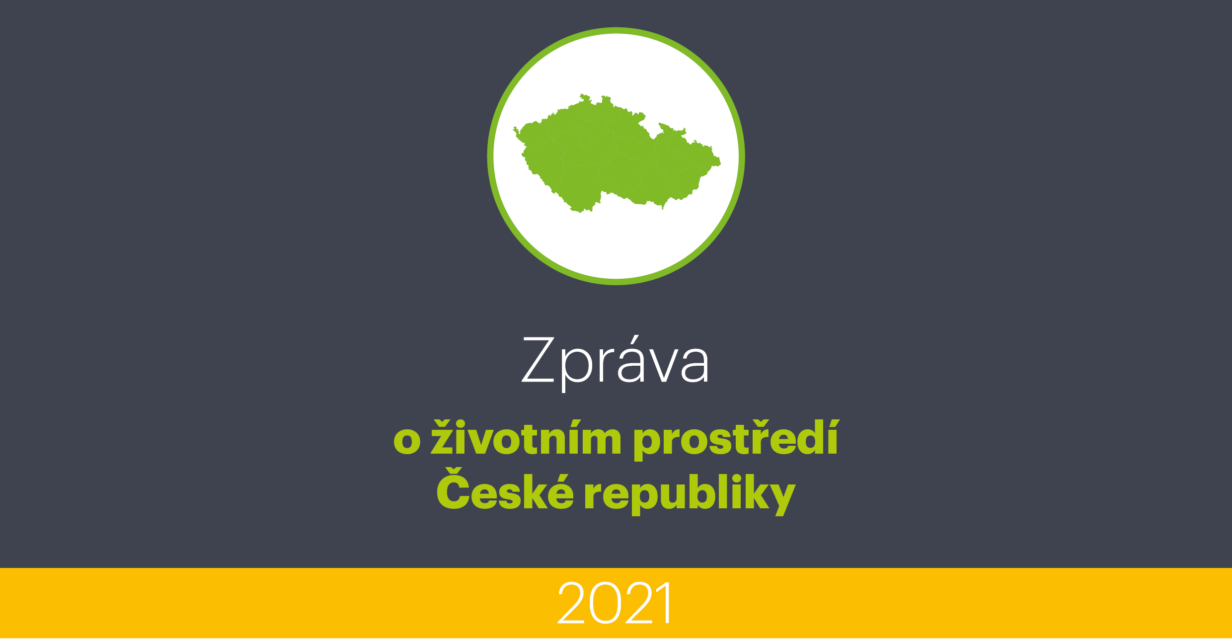
Czech Environmental Information Agency has published a new Environmental Report 2021.
The conclusions of the Environmental Report, which assesses the state and development of the environment including socio-economic contexts based on the latest available data, show that the state of the environment in the Czech Republic is still not optimal. Air quality in the Czech Republic is slowly improving, but there is still a high proportion of air emissions from local heating of households with solid fuels, which provides more than a third of household heat. The burning of not only coal, but also wood, wood waste and other materials not intended for heating is problematic from the point of view of emissions. The unsustainable use of natural resources is reflected in the poor state of ecosystems and the loss of biodiversity.
In terms of temperature and precipitation, 2021 was a normal year with no major extremes, but the long-term rise in average annual temperature in the Czech Republic is accelerating. Soil drought, unlike in previous years, was not widespread and only the southern Moravia region was affected in higher intensity. The fluctuations in temperature and precipitation to normal values are part of climate change, which is also manifested in the increasing extremity of hydrometeorological phenomena. In June 2021, the strongest tornado in the history of the Czech Republic hit South Moravia, causing casualties and billions of dollars in property damage.
The course of the weather in 2021 mitigated the development of the bark beetle calamity in forests and led to a year-on-year reduction in the harvesting of bark beetle timber. The condition of forests damaged by the bark beetle calamity is impairing their ability to sequester carbon dioxide and poses a serious challenge to moving towards climate neutrality.
Although surface water quality has improved compared to 2000, some stretches of watercourses are still rated as heavily or very heavily polluted. Compared to 2000, improved wastewater treatment technology has reduced ammonia nitrogen and total phosphorus in watercourses.
Biodiversity indicators and forest and agricultural landscapes are deteriorating, with a continued reduction in natural habitats and a decline in bird populations. The area of agricultural (mainly arable) land is decreasing year by year and the area of built-up land is increasing. Agricultural production is intensive and high levels of mineral fertilisers continue to be applied. This, together with the persistence of large soil blocks and a high degree of ploughing, causes a threat of soil erosion.
The material and energy intensity of farming is decreasing. The 2020 target for primary energy consumption has not been exceeded and the more stringent 2030 target has not been exceeded. The structure of the energy mix is still different from the target structure, but is gradually changing in the desired direction. Foreign trade in electricity remains export-oriented. Although the use of renewable sources for electricity and heat generation is growing, the Czech Republic is heavily dependent on imports of energy raw materials from abroad, especially oil and natural gas.
Waste production has not been reduced, but overall waste management is still dominated by material recovery, which is increasing in line with the principles of circular economy and the current waste management hierarchy. In the case of municipal waste, however, landfilling predominates.
Transport in the Czech Republic remains carbon intensive, with the majority of energy consumption in transport coming from the combustion of fossil fuels. Air pollution from transport is gradually declining as technology is modernised and legislative requirements are met.
Environmental protection, including addressing climate change, has long been financed from both national and European sources through operational programmes, in particular the Operational Programme Environment and the Rural Development Programme. Examples of successful financing of environmental protection measures are the implementation of the New Green Savings, Rainfall and Boiler subsidies programmes.
The Environment Report 2021 is published in a shortened version this year (the detailed version is prepared every two years). Visualised data for the Environmental Report indicators in interactive form are available on the Envirometr web portal.

